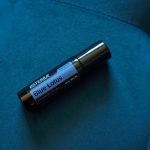To clean your leather sofa safely, start by identifying its type. Use a soft brush or vacuum to remove dust, then test a mild soap and warm water mix on a hidden spot. You can also try equal parts vinegar and olive oil for natural cleaning or a commercial leather cleaner. Always dry immediately and apply a fitting leather conditioner afterward to keep the leather soft and prevent cracking. Keep going to discover expert tips and stain removal tricks that keep your sofa looking fresh.
Table of Contents
Key Takeaways
- Use a mild soap and warm water mixture or a commercial leather cleaner specifically designed for your sofa’s leather type.
- Always test cleaning solutions on a hidden area before applying to the entire sofa to avoid damage.
- Remove dust and dirt first with a soft brush or vacuum with a brush attachment to prevent surface abrasion.
- Apply a suitable leather conditioner after cleaning to restore moisture and prevent cracking or drying.
- Avoid harsh chemicals, abrasive tools, and direct sunlight during cleaning to maintain leather quality and durability.
Understanding Your Leather Sofa Type
Before you start cleaning, you need to know what type of leather your sofa is made from. Different leathers require different care, so identifying your sofa’s leather helps you avoid damage.
Common types include top-grain, full-grain, bonded, and faux leather. Top-grain leather is smooth and durable, while full-grain retains natural markings and ages beautifully. Bonded leather combines scraps with adhesives, making it less durable. Faux leather is synthetic but looks like real leather.
Check your sofa’s tag or manufacturer’s guide for the leather type. If uncertain, test a small hidden area with a damp cloth to see how it reacts.
Knowing your leather type guarantees you pick the safest cleaning method and products, protecting your sofa’s look and lifespan.
Preparing Your Sofa for Cleaning
Knowing your sofa’s leather type sets you up for effective cleaning.
Before you start, remove any cushions or throws to expose all surfaces. Use a soft brush or vacuum with a brush attachment to gently clear away dust, dirt, and crumbs—this prevents scratching during cleaning.
Check for any stains or spots that may need special attention later. Next, test your cleaning method on a hidden area to verify it won’t damage or discolor the leather.
Avoid exposing your sofa to direct sunlight or heat during cleaning, as this can dry out the leather.
Finally, gather all your cleaning supplies so you can work efficiently without interruptions. Proper preparation helps you clean safely and keeps your leather sofa looking great.
Using Mild Soap and Water Solutions
One effective way to clean your leather sofa is by using a mild soap and water solution. This method gently removes dirt without damaging the leather’s natural oils.
To get started, mix a few drops of mild soap, like dish soap or baby shampoo, into a bowl of warm water. Dip a soft cloth into the solution, wring it out well, and wipe your sofa’s surface carefully.
Mix mild soap with warm water, dampen a soft cloth, and gently wipe your leather sofa’s surface.
Keep these tips in mind:
- Test on a hidden area first to check for colorfastness.
- Avoid soaking the leather; use a damp, not wet, cloth.
- Dry the sofa immediately with a clean, dry towel to prevent water spots.
This simple solution keeps your leather clean and supple without harsh chemicals.
Cleaning With Vinegar and Olive Oil Mixture
If you want a natural alternative to mild soap solutions, try a mixture of vinegar and olive oil.
Combine equal parts white vinegar and olive oil in a bowl. Dip a soft cloth into the blend, wring it out so it’s damp, not soaking, and gently wipe your leather sofa.
The vinegar works as a mild disinfectant and cleaner, while the olive oil conditions the leather, preventing it from drying out.
After applying, buff the surface with a clean, dry cloth to restore shine and remove any excess oil.
Remember to test this mixture on a small, hidden area first to verify it doesn’t discolor your leather.
This simple method keeps your sofa clean, supple, and naturally fresh without harsh chemicals.
Employing Commercial Leather Cleaners
Several commercial leather cleaners are available to help you maintain your sofa’s appearance with minimal effort. These products are designed specifically for leather, ensuring effective cleaning without causing damage.
When choosing a cleaner, look for one that suits your sofa’s finish and offers gentle yet thorough cleaning. Here’s why using commercial leather cleaners can be beneficial:
- Formulated to remove dirt, oils, and stains without stripping leather’s natural oils
- Often include pH-balanced ingredients that protect leather fibers
- Easy-to-use sprays or wipes that make routine cleaning quick and convenient
Always test the cleaner on a small, hidden area first to check for any discoloration.
Using these products correctly will keep your leather sofa looking fresh and vibrant for years.
Applying Leather Conditioners After Cleaning
After cleaning your leather sofa with commercial products, applying a leather conditioner helps restore moisture and flexibility. You’ll want to pick a conditioner suited for your leather type and apply it evenly using a soft cloth. This prevents drying and cracking, keeping your sofa soft and durable. Conditioners penetrate the leather, replenishing oils lost during cleaning.
Here’s a quick guide to applying conditioners effectively:
| Step | Action |
|---|---|
| Choose | Select a conditioner for your leather type |
| Apply | Use a soft cloth to apply gently |
| Buff | Buff the surface to absorb excess |
Regular conditioning after cleaning prolongs your sofa’s life and maintains its natural look.
Stain Removal Techniques for Leather
Though leather is durable, stains can still mar its surface and require prompt attention. To tackle stains effectively, act quickly and avoid harsh chemicals that can damage the leather.
Start by gently blotting the stain with a clean, dry cloth to absorb excess moisture. Then, try these stain removal techniques:
- Use a mild soap solution (like diluted dish soap) applied with a soft cloth to lift dirt.
- For oil-based stains, sprinkle a small amount of cornstarch or baking soda, let it sit for a few hours, then brush off.
- Employ a commercial leather cleaner designed specifically for your sofa’s finish.
Always test any method on a hidden area first. Prompt, careful treatment keeps your leather sofa looking fresh and pristine.
Avoiding Common Cleaning Mistakes
When you clean your leather sofa, avoiding common mistakes is crucial to preserving its look and feel.
Don’t use harsh chemicals or abrasive tools, as they can damage the leather’s surface. Avoid soaking the leather with too much water; leather is porous and excess moisture can cause staining or warping.
Never clean in direct sunlight or near heat sources, since extreme temperatures may dry out or crack the leather. Also, don’t use random household cleaners without testing them on a hidden spot first to verify they won’t discolor or degrade the leather.
Finally, don’t scrub aggressively—gentle wiping with a soft cloth is more effective and less damaging.
Tips for Regular Maintenance and Care
Keeping your leather sofa in great shape requires just a few simple habits. Regular maintenance not only preserves its look but also extends its life.
To keep your sofa fresh and supple, follow these tips:
- Dust and vacuum weekly: This prevents dirt buildup that can wear down the leather.
- Wipe spills immediately: Use a soft, damp cloth to blot spills to avoid stains.
- Condition every 6-12 months: Apply a leather conditioner to maintain moisture and prevent cracking.
Frequently Asked Questions
Can I Use a Steam Cleaner on My Leather Sofa?
You shouldn’t use a steam cleaner on your leather sofa because the heat and moisture can damage the leather, causing it to crack or warp. Instead, stick to gentle, leather-safe cleaning methods to protect your sofa’s finish.
How Often Should I Professionally Clean My Leather Sofa?
You should professionally clean your leather sofa every 12 to 18 months. Studies show 70% of leather damage comes from dirt buildup, so regular deep cleaning keeps it looking fresh and extends its lifespan considerably.
Is It Safe to Use Baby Wipes on Leather Furniture?
You shouldn’t use baby wipes on leather furniture regularly because they can dry out or damage the leather. Instead, use a cleaner specifically made for leather or a damp cloth with mild soap for safer cleaning.
What Temperature of Water Is Best for Cleaning Leather?
You want to use lukewarm water, not hot water, not cold water, for cleaning leather. Lukewarm water helps loosen dirt gently without damaging the leather’s finish, keeping your sofa clean and looking great longer.
Can Sunlight Damage My Leather Sofa During Cleaning?
Yes, sunlight can damage your leather sofa by causing it to fade and dry out. Avoid placing it in direct sunlight during cleaning to keep the leather supple and maintain its rich color over time.
- The Use of Nonwovens in Construction and Civil Engineering - July 11, 2025
- The Use of Nonwovens in Construction and Civil Engineering - July 11, 2025
- The Use of Nonwovens in Construction and Civil Engineering - July 11, 2025







